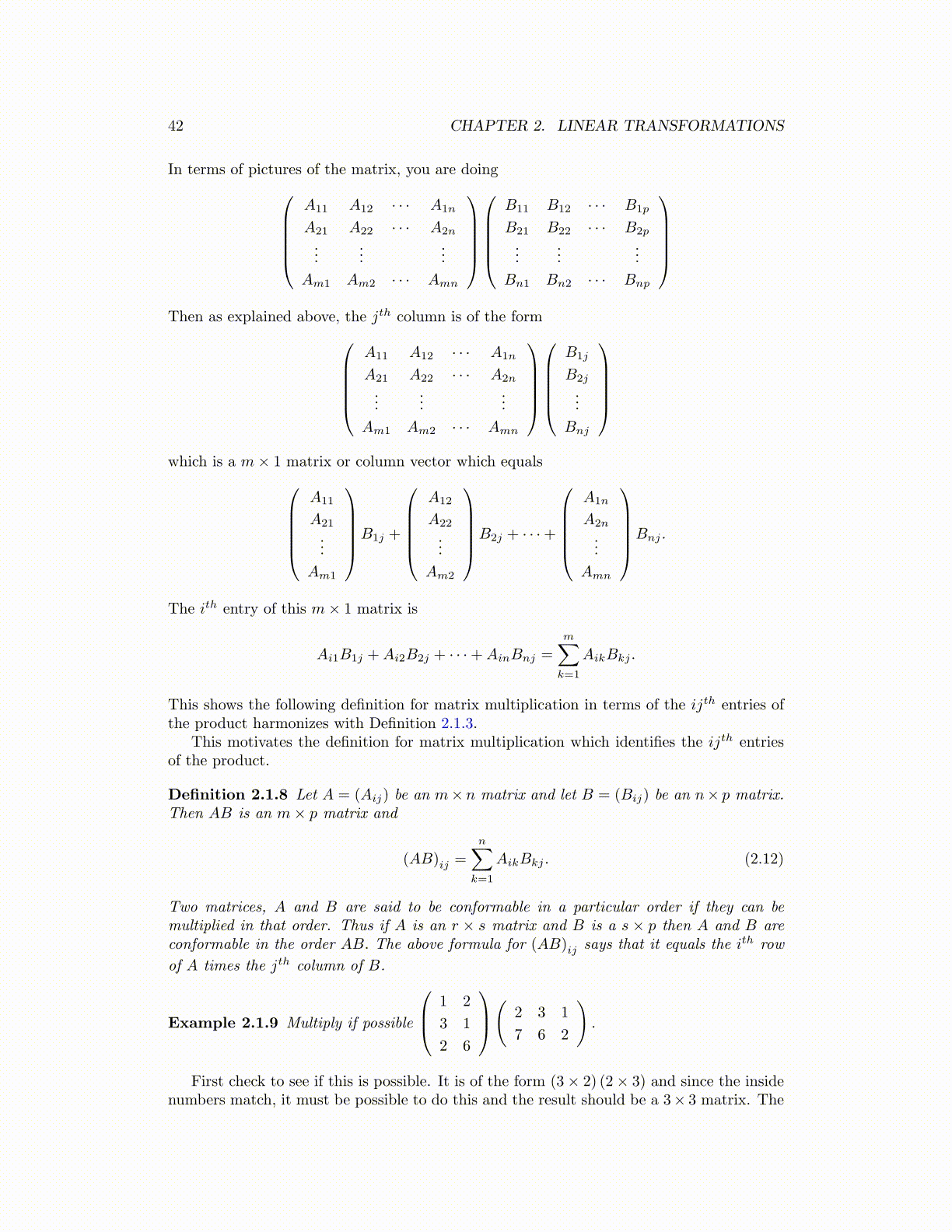
42 CHAPTER 2. LINEAR TRANSFORMATIONS
In terms of pictures of the matrix, you are doingA11 A12 · · · A1n
A21 A22 · · · A2n
......
...
Am1 Am2 · · · Amn
B11 B12 · · · B1p
B21 B22 · · · B2p
......
...
Bn1 Bn2 · · · Bnp
Then as explained above, the jth column is of the form
A11 A12 · · · A1n
A21 A22 · · · A2n
......
...
Am1 Am2 · · · Amn
B1j
B2j
...
Bnj
which is a m× 1 matrix or column vector which equals
A11
A21
...
Am1
B1j +
A12
A22
...
Am2
B2j + · · ·+
A1n
A2n
...
Amn
Bnj .
The ith entry of this m× 1 matrix is
Ai1B1j +Ai2B2j + · · ·+AinBnj =
m∑k=1
AikBkj .
This shows the following definition for matrix multiplication in terms of the ijth entries ofthe product harmonizes with Definition 2.1.3.
This motivates the definition for matrix multiplication which identifies the ijth entriesof the product.
Definition 2.1.8 Let A = (Aij) be an m×n matrix and let B = (Bij) be an n× p matrix.Then AB is an m× p matrix and
(AB)ij =
n∑k=1
AikBkj . (2.12)
Two matrices, A and B are said to be conformable in a particular order if they can bemultiplied in that order. Thus if A is an r × s matrix and B is a s × p then A and B areconformable in the order AB. The above formula for (AB)ij says that it equals the ith row
of A times the jth column of B.
Example 2.1.9 Multiply if possible
1 2
3 1
2 6
( 2 3 1
7 6 2
).
First check to see if this is possible. It is of the form (3× 2) (2× 3) and since the insidenumbers match, it must be possible to do this and the result should be a 3× 3 matrix. The